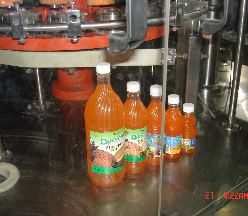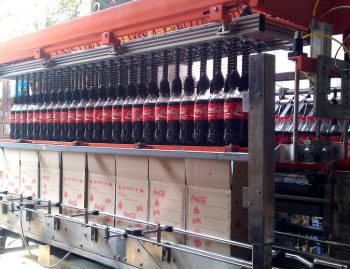
Introduction to the Soft Drink Industry
Welcome to the fizzy world of soft drinks, where bubbles dance on your taste buds and refreshment reigns supreme! Have you ever wondered why this industry has been so incredibly profitable over the years? Well, grab a cold soda (or pop, depending on where you’re from) and let’s dive into the fascinating story behind one of the most lucrative sectors in the beverage market. From its humble beginnings to its global domination, we’ll uncover why the soft drink industry continues to quench our thirst for success. So sit back, relax, and prepare to be fizz-tivated by this captivating journey!
Historical Background and Evolution of Soft Drinks
Soft drinks have a rich historical background that dates back centuries. The origins of these refreshing beverages can be traced to ancient civilizations such as Egypt and China, where people would mix various ingredients like honey, water, and fruits to create flavorful concoctions.
However, it wasn’t until the 17th century that the soft drink industry truly began to take shape. In Europe, carbonated water became popular for its perceived health benefits. Scientists and inventors started experimenting with ways to carbonate water artificially using carbon dioxide gas.
The first commercially successful soft drink was created in the late 18th century by Jacob Schweppe, who developed a process for manufacturing carbonated mineral water. This invention laid the foundation for what would become one of the most profitable industries in history.
Over time, soft drinks evolved from simple carbonated waters into a wide range of flavors and brands. In the early 20th century, companies like Coca-Cola and PepsiCo emerged as key players in the market with their iconic cola recipes.
Advancements in technology further propelled the growth of this industry. Bottling techniques were refined, allowing for mass production and distribution on a global scale. Refrigeration also played a crucial role in ensuring that soft drinks could be enjoyed cold and refreshing.
The marketing strategies employed by major players in this industry have been instrumental in driving its profitability. Through clever advertising campaigns targeting different demographics and utilizing celebrity endorsements, companies have managed to capture consumer attention and loyalty.
Today’s soft drink market is highly competitive but continues to thrive due to globalization trends. With expanding markets around the world and increasing disposable incomes in emerging economies, there is no shortage of demand for these fizzy beverages.
Controversies surrounding health concerns related to excessive sugar consumption have put pressure on soft drink manufacturers to offer healthier alternatives or reduce sugar content significantly without compromising taste or profit margins.
In conclusion (as per instructions), understanding both historical roots and evolving consumer preferences has been key factors in the profitability of the soft drink industry. By adapting to changing times, innov
Key Players in the Industry
The soft drink industry is dominated by a handful of key players who have managed to establish their brands as household names. These companies have not only survived, but thrived in an increasingly competitive market.
One such key player is Coca-Cola, which has been around for over a century and remains one of the most recognized and valuable brands in the world. With its iconic red cans and refreshing taste, Coca-Cola has successfully captured the hearts (and taste buds) of consumers across generations.
PepsiCo is another major player that has made its mark in the soft drink industry. Known for its wide range of beverage options including Pepsi, Mountain Dew, and Gatorade, PepsiCo has successfully targeted different segments of the market with their diverse product portfolio.
Dr Pepper Snapple Group is also worth mentioning as a key player in the industry. With popular brands like Dr Pepper, 7UP, and Snapple under its umbrella, this company continues to appeal to consumers looking for unique flavors and choices beyond traditional cola drinks.
These key players understand the importance of effective marketing strategies in capturing consumer attention and loyalty. They invest heavily in advertising campaigns that evoke emotions or create memorable experiences. By targeting specific demographics through carefully crafted messages and sponsorships with sports events or celebrities, they are able to reach their intended audience effectively.
Marketing Strategies and Target Audience
Marketing Strategies and Target Audience
In the highly competitive soft drink industry, marketing strategies play a crucial role in determining success. Companies employ various tactics to reach their target audience and create a lasting impression.
One of the most common marketing strategies employed by soft drink companies is celebrity endorsements. By associating their brand with well-known personalities, they aim to enhance their product’s image and attract consumers who admire these celebrities.
Another effective strategy is targeted advertising. Soft drink companies carefully analyze consumer demographics and psychographics to understand their preferences and interests. They then design advertisements that resonate with specific groups, whether it be millennials seeking adventure or health-conscious individuals looking for low-calorie options.
Social media has also revolutionized the way soft drinks are marketed. With platforms like Instagram and Facebook, companies can directly engage with their audience through visually appealing content and interactive campaigns. This allows them to build strong relationships with consumers while staying relevant in today’s digital age.
Furthermore, product placement in popular movies or TV shows has become a powerful tool for reaching wider audiences. When characters on-screen casually sip a recognizable soda brand, viewers subconsciously associate it with positive emotions or experiences, increasing the likelihood of purchasing that particular beverage.
In recent years, there has been a shift towards experiential marketing within the soft drink industry as well. Companies create immersive events or pop-up shops where consumers can interact with their brand firsthand. These unique experiences not only generate buzz but also leave a lasting impression on attendees.
Successful marketing strategies in the soft drink industry revolve around understanding the target audience’s desires and finding innovative ways to connect with them emotionally. By continuously adapting techniques to match changing consumer trends, companies can maintain profitability amidst fierce competition
Impact of Globalization on the Soft Drink Industry
One of the major factors that has contributed to the profitability of the soft drink industry is globalization. With advancements in technology and transportation, companies are now able to reach consumers all over the world. This has opened up new markets and opportunities for growth.
Globalization has allowed soft drink companies to expand their operations into different countries, tapping into diverse consumer preferences and tastes. For example, Coca-Cola, one of the key players in the industry, has successfully adapted its products to suit local tastes in various countries. From mango-flavored drinks in India to green tea-infused beverages in Japan, they have been able to cater to different cultural preferences.
Furthermore, globalization has facilitated international trade and distribution networks for soft drink companies. They can now efficiently transport their products across borders at a lower cost than ever before. This not only allows them to reach more consumers but also helps streamline their supply chain management.
In addition, multinational soft drink companies have also leveraged globalization by establishing partnerships with local bottlers or distributors in different regions. By collaborating with these regional partners who have a deep understanding of local markets and distribution channels, they can effectively penetrate new territories faster.
However, it’s important to note that globalization hasn’t come without its challenges for the soft drink industry. Increased competition from both domestic and international players is one such challenge. As more brands enter new markets around the world, existing players need to constantly innovate and differentiate themselves from competitors.
Moreover, there are growing concerns about health implications associated with excessive consumption of sugary drinks globally. Soft drink companies have faced criticism regarding their marketing practices targeting children as well as allegations related to obesity rates linked with high sugar intake.
Despite these challenges and controversies surrounding the industry due to globalization’s impact on public health awareness campaigns worldwide questioning excessive soda consumption – notably through taxation policies on sugary drinks – it cannot be denied that overall profitability remains strong within this sector thanks largely due globalizing efforts made successful by key players such as Coca-Cola or PepsiCo.
Controversies Surrounding the Industry
The soft drink industry, despite its profitability, has not been without its fair share of controversies. One major controversy that has plagued the industry is the health concerns associated with consuming sugary drinks. Many studies have linked excessive consumption of soft drinks to obesity, diabetes, and other related health issues. This has led to increased scrutiny and calls for stricter regulations on advertising and marketing targeted at children.
Another controversy surrounding the industry is its environmental impact. The production and packaging of soft drinks generate a significant amount of waste, particularly plastic bottles. The improper disposal of these bottles contributes to pollution of landfills and oceans, which in turn harms wildlife and ecosystems.
Furthermore, there have been debates regarding the use of artificial sweeteners in diet sodas. While these additives are intended to provide a low-calorie alternative for consumers watching their weight or managing conditions like diabetes, some studies suggest potential negative health effects including an increased risk for certain diseases.
Additionally, there have been allegations against some companies in the soft drink industry regarding labor practices in their supply chain. Reports have emerged accusing certain brands of exploiting workers through poor working conditions or unfair wages.
These controversies highlight various ethical concerns within the soft drink industry that need to be addressed moving forward. As consumer awareness continues to grow regarding health and sustainability issues, it becomes imperative for companies in this sector to take proactive steps towards greater transparency and responsibility throughout their operations.
Future Outlook for the Soft Drink Industry
The soft drink industry has been a dominant force in the beverage market for decades, and its future looks promising. With changing consumer preferences and advancements in technology, this industry is constantly evolving to meet the demands of its target audience.
One major trend that will shape the future of the soft drink industry is the growing demand for healthier options. As consumers become more health-conscious, they are seeking beverages that offer natural ingredients, reduced sugar content, and functional benefits. This shift towards healthier choices presents both challenges and opportunities for soft drink companies.
To stay competitive in this changing landscape, many key players in the industry are investing heavily in research and development to create new products that cater to these health-conscious consumers. We can expect to see an increase in low-calorie and zero-sugar variations of popular soft drinks, as well as innovative blends with added vitamins, minerals, or botanical extracts.
Furthermore, sustainability practices are becoming increasingly important for businesses across all industries. In response to growing environmental concerns, soft drink companies are focusing on reducing their carbon footprint by adopting eco-friendly packaging materials and implementing recycling initiatives.
Another aspect that will significantly impact the future of this industry is technological advancements. With the rise of e-commerce platforms and mobile applications delivering groceries right at your doorstep within hours or even minutes now possible due to drone deliveries being tested by some retailers like Amazon; convenience plays a significant role when it comes to purchasing decisions.
In conclusion (Note: not part of blog section), while there may be challenges ahead such as stricter regulations on sugary beverages or shifting consumer preferences towards alternative beverages like sparkling water or fruit juices; ultimately if companies can adapt quickly enough by embracing innovation technologically speaking along with sustainable practices environmentally then we believe there’ll still remain plenty room left available where they can continue thriving financially given how profitable historically speaking The Soft Drink Industry’s always been!
Conclusion: The Secret to Success in the Soft Drink Industry
In this blog post, we have delved into the world of the soft drink industry and explored why it has been so profitable over the years. From its historical background and evolution to the key players and marketing strategies, we have seen how various factors contribute to its success.
One of the secrets behind the soft drink industry’s profitability lies in its ability to adapt and innovate. Throughout history, companies like Coca-Cola and PepsiCo have continuously introduced new flavors, packaging designs, and marketing campaigns that captivate consumers’ attention. They understand that staying stagnant is not an option in such a competitive market.
Moreover, their effective marketing strategies play a crucial role in attracting a wide range of target audience demographics. By leveraging creative advertisements, sponsorships, endorsements from popular figures, engaging social media presence, and strategic partnerships with restaurants or events, these companies manage to stay relevant amidst changing consumer preferences.
Globalization has also played a significant role in bolstering profits for soft drink companies. With expanding markets overseas and increased accessibility due to advancements in transportation technology, these companies can reach a broader customer base than ever before. This expansion into international markets allows them to tap into new opportunities for growth.
However lucrative it may be though; controversies surrounding ingredients used by some manufacturers cannot be ignored. Issues related to high sugar content leading to health problems like obesity or dental issues have sparked debates about ethical practices within the industry. Moreover, concerns regarding environmental sustainability due to plastic waste generated by beverage bottles are being addressed but still remain valid points of contention among critics.
Looking ahead at future prospects for the soft drink industry reveals both challenges and opportunities on the horizon. As consumer tastes continue evolving towards healthier options driven by increasing awareness about nutrition-related issues worldwide – brands will need innovative ways beyond traditional sugary carbonated beverages alone if they want sustainable success moving forward.







